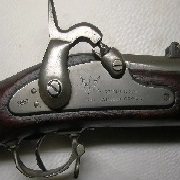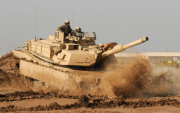|
zoux posted:The article makes the case that this movie specifically shifted public perception and political stances toward global nuclear war, which , you know, good that that happened, but also unsettling that people didn't realize what nuclear war meant before they saw a made-for-TV movie about it. A made-in-America TV series on the Holocaust showed in West Germany in 1979 and that started a whole public discussion about the Holocaust. They showed each episode back-to-back with a panel show of historians. It's not that West Germany hadn't known the Holocaust was a thing before that, it's seeing images, hearing sounds, following a plot.
|
|
|
|

|
| # ? Jun 2, 2024 03:44 |
|
Taerkar posted:Most E2s were built with 75mm guns as they were intended to attack fortified positions, places where the superior HE shell of the 75 would be better than the 76. Uh, thats what I just said...
|
|
|
|
zoux posted:I was 4 in 1983 so I didn't really have my finger on the pulse of the Zeitgeist, was anyone old enough to remember watching this movie and then the roundtable as it happened? The article says that polling showed that 50% of Americans thought they would die in a nuclear war, which is so nihilistic it must have affected the national character tremendously. The article makes the case that this movie specifically shifted public perception and political stances toward global nuclear war, which , you know, good that that happened, but also unsettling that people didn't realize what nuclear war meant before they saw a made-for-TV movie about it. I was 13. I distinctly remember watching the movie on TV with my parents, then talking about it in school the next day. It had enough of an impact that the discussion wasn't confined to Social Studies or History classes, pretty much the whole day was spend on it in one form or another. I don't think the movie did that much to alter my personal perspective. I was interested in military history at that point and had read more than a few books on nuclear war at that point. I lived in New Jersey, right across the river from NYC. I was under no illusions - if there was a war, if I was lucky I was going to die quickly. (If I was unlucky I'd die slowly.) The only real question was whether there was going to be a war or not. Most of the teachers were savvy enough that they understood this as well. They had grown up in the "duck and cover" era and some of them brought up the fact that they'd lived through the Cuban Missile Crisis as kids. They knew that we were doomed if the balloon went up. As for my peers? Well, I don't think I said it out loud, but I felt a bit of an "I told you so" sort of vindication after they saw the movie; they seemed to understand what was at stake more than they did beforehand.
|
|
|
|
zoux posted:What was the US's biggest boondoggle or mistake during WW2 Tank Destroyers. 
|
|
|
|
Cyrano4747 posted:Those 41 numbers are a bit iffy if were taking t34s for a bunch of reasons. First off the 34 was no where near the dominant tank in service. You have a ton of BT tanks etc in there that German armor could deal with just fine. You also have issues with the chaos of the early months. Armor formations being destroyed due to dumb unsupported counterattacks and the like. Numbers were pulled from Russian war documents via the book The Red Army Handbook 1939-1945. Nope the T34 wasn't close to the dominant tank in service in 1941. There was the T-28 that was still being built in 1941. Almost all of them were lost in that same year. The T26 was still in service in 1941 and much like the 28, was nearly completely wiped out in the same year but mostly to air attacks and arty, and then to just lack of parts. The 35's were gone mostly by 1940. There were too few T50's to be anything but a tiny blip. The T60's didn't enter service until the middle of 1941 but were rather easy fodder for any level of German armor fielded. 6292 of these little fuckers were built in a two year period.
|
|
|
|
Cessna posted:Tank Destroyers. N-no.... HEY GUNS posted:This is how many things happened, like the influence The Jungle had on food safety laws, or the claim that Bill Clinton started to think seriously about biowarfare after reading Hot Zone. Human beings think in terms of concrete things--images, scenes, sounds. That's a good point.
|
|
|
|
For a more recent example of TV shaping public perception, look at Blue planet 2 and ocean plastics.
|
|
|
|
|
chitoryu12 posted:And then dealing with the gunner not having an unmagnified sight, which according to the French tests meant an average of 20 seconds of back-and-forth between the gunner and commander to lay the gun on a new target. Or the turret rotating down when on an incline because of the weak rotation system (which on some models was tied to the engine RPM for speed). And hoping you don't get shot in the side, which is so thin that a 14.5mm anti-tank rifle could penetrate it at 100 yards. Sure, I'm not trying to argue that the Panther was some unkillable supertank. It had issues, significant issues, that we could spent all day discussing and laughing about. But at the same time, in the right hands and in the right situations* (Many of which weren't that uncommon, especially in the defensive war Germany was fighting in the West) it was an exceptionally dangerous vehicle, one that the Americans were unprepared to face in the numbers they did—hence the desperate call for more M36s and the acceleration of the T26 program (And of course, let's not forget the Sherman had some problems as well—the 76, for instance, had been cut too short to facilitate shipping, and had a tendency to kick up a shitton of dust every time it fired, preventing the crew from seeing anything for up to a minute after firing. And the ammo stowage in the early models was... problematic). We both know that the Sherman was ultimately the better tank for the war that was fought. Getting tanks to the battlefield before the enemy can and bringing more of them is the single best way to win an armor engagement, and in spite of the logistical challenges the American army could almost count on having more Shermans in a fight than the Germans ever could Panthers. I just think it's important to remember that the Panther was still very dangerous in spite of its flaws, in ways that influenced American strategic thinking and their production priorities. *Of course in the wrong hands and in the wrong situations it could be dunked on hilariously, such as at Arracourt.
|
|
|
|
Acebuckeye13 posted:
This was more, or less, WW2 in a nutshell. The Germans had crazy tech. Sure that tech was often not fully vetted, broke down often or just wasn't ready for prime time. And thankfully a loving nut job was in charge. The Panther was much like the Me-262. If the higher ups didn't gently caress around with it to do something it wasn't supposed to do, it would have been a lot worse for the allies.
|
|
|
|
zoux posted:N-no.... (I was joking, based on the thread title and memory of past arguments.)
|
|
|
|
Cessna posted:(I was joking, based on the thread title and memory of past arguments.) I was playing along, also thanks for being old as poo poo for your perspective on The Day After.
|
|
|
|
zoux posted:That's a good point. also i don't know if the bill clinton story is true, but it is what i heard when i read hot zone HEY GUNS fucked around with this message at 17:26 on Dec 13, 2018 |
|
|
|
Randarkman posted:Artillery. The Americans did artillery smarter and more efficient (well perhaps not efficient, there was a prodigious amount of shell expenditure involved) than basically everyone else. Though the incredible wealth and resources of the US lay behind why they were able to do artillery so much better than others. bewbies posted:I'd argue that both of these advantages were made possible only by the bottomless pit of raw materials and colossal untouched manufacturing capacity that was midcentury America but there probably isn't any real way to quantify that statement. This exactly. When it came to EFFICIENT artillery use US couldnt hold a candle on some small countries that had to count every shell individually. Not that it matters, If you have ten Times the resources using them at 2/3rds as efficient you still end up with 70% better end result due to volume alone.
|
|
|
|
zoux posted:I was playing along, also thanks for being old as poo poo for your perspective on The Day After. Happy to help! (Looks at grey hairs reflected in monitor, weeps.)
|
|
|
|
zoux posted:What was the US's biggest boondoggle or mistake during WW2 Lend Lease!
|
|
|
|
Valtonen posted:This exactly. When it came to EFFICIENT artillery use US couldnt hold a candle on some small countries that had to count every shell individually. Not that it matters, If you have ten Times the resources using them at 2/3rds as efficient you still end up with 70% better end result due to volume alone. Its funny how it changed when nukes entered the picture how the US's "role" reversed. The US was allowed far fewer warheads, because the accuracy of those warheads was, at the time, leaps and bounds ahead of the Russians, not to mention the overall reliability (or the supposed reliability) of the launch vehicles.
|
|
|
|
I think the refusal to use the ocean convoy system for so long... we lost a lot of ships, material and men before we started using the convoy.
|
|
|
|
What the US military got really good at in WW2 and continues to be good at and scares the poo poo out of military planners everywhere else is moving things from A to a very far away B. All kinds of stuff and lots of it, consistently and on time. Land, sea, air. Troops, equipment, support services, supplies. By the end of WW2, there was no place on Earth the US couldn't throw a credible combat force and then give it what it needed to operate, even if it was a terrible idea to do it. Basically the US military turned into Amazon with guns.
|
|
|
|
zoux posted:What was the US's biggest boondoggle or mistake during WW2 The US could afford boondoggles like no one else (The bat bomb being an always fun and exciting example) though the mistake that cost them the most was probably Replacement Depots. For most countries, when a unit was sent into combat, that unit would be expected to be ground down over time, then pulled back to the rear, built up with replacements, and then eventually sent back to the front. The US, however, utalized a system of Replacement Depots, or the 'Repple-Depple' system. Instead of units being replenished when they were pulled off the line, units would be continually provided with fresh troops from the states or troops that had been previously wounded in combat but had recovered. I think the intention was that it would allow for combat units to remain on the front lines for longer, but it ended up being a corrosive mess for multiple reasons:
Ultimately, the repple-depple system got a lot of people killed and only got worse as the war went on. It really wasn't a sustainable system, and the US is lucky in many respects that the war ended when it did.
|
|
|
|
EvilMerlin posted:Numbers were pulled from Russian war documents via the book The Red Army Handbook 1939-1945. The point being made is that you are trying to use kill ratios to prove the T34 is bad and that's just silly
|
|
|
|
Valtonen posted:This exactly. When it came to EFFICIENT artillery use US couldnt hold a candle on some small countries that had to count every shell individually. Not that it matters, If you have ten Times the resources using them at 2/3rds as efficient you still end up with 70% better end result due to volume alone. Well the US lack of efficiency is mostly that if it was at all possible to request artillery against a target, you would do so and the shells would begin landing not long after. For the Germans for an example this wasn't quite the case, they weren't quite as eager to expend shells to do a job that infantrymen with light equipment could accomplish, also not quite as willing to risk revealing their guns and being exposed to counter-battery fire. That's the US being "less efficient" in their use of artillery, perhaps it is more appropriate to say that they were "less frugal" with their shell expenditure. When it comes to being able to quickly and accurately lay shells at a target I don't think any other army really came close.
|
|
|
|
Acebuckeye13 posted:The US could afford boondoggles like no one else (The bat bomb being an always fun and exciting example) though the mistake that cost them the most was probably Replacement Depots. For most countries, when a unit was sent into combat, that unit would be expected to be ground down over time, then pulled back to the rear, built up with replacements, and then eventually sent back to the front. The US, however, utalized a system of Replacement Depots, or the 'Repple-Depple' system. Instead of units being replenished when they were pulled off the line, units would be continually provided with fresh troops from the states or troops that had been previously wounded in combat but had recovered. I think the intention was that it would allow for combat units to remain on the front lines for longer, but it ended up being a corrosive mess for multiple reasons: Did this practice extend into Vietnam? I just know from movies and books about FNGs getting assigned to veteran units and dudes not even learning guys names, was that just dramatic license or was it different from the RD system?
|
|
|
|
Acebuckeye13 posted:We both know that the Sherman was ultimately the better tank for the war that was fought. Getting tanks to the battlefield before the enemy can and bringing more of them is the single best way to win an armor engagement, and in spite of the logistical challenges the American army could almost count on having more Shermans in a fight than the Germans ever could Panthers. Is there a war that could have been fought where the Panther's tactical advantages outweighed the Sherman's strategic and operational advantages? You make it sound like such a situation really exists, and I am not convinced.
|
|
|
|
Acebuckeye13 posted:The US could afford boondoggles like no one else (The bat bomb being an always fun and exciting example) though the mistake that cost them the most was probably Replacement Depots. For most countries, when a unit was sent into combat, that unit would be expected to be ground down over time, then pulled back to the rear, built up with replacements, and then eventually sent back to the front. The US, however, utalized a system of Replacement Depots, or the 'Repple-Depple' system. Instead of units being replenished when they were pulled off the line, units would be continually provided with fresh troops from the states or troops that had been previously wounded in combat but had recovered. I think the intention was that it would allow for combat units to remain on the front lines for longer, but it ended up being a corrosive mess for multiple reasons: I believe the Soviets also handled casualties and replacements in a matter pretty similar to this. I'll have to look it up.
|
|
|
|
Fangz posted:The point being made is that you are trying to use kill ratios to prove the T34 is bad and that's just silly No that wasn't the point I was trying to make. I never said the T34 was bad, not once.
|
|
|
|
KYOON GRIFFEY JR posted:Is there a war that could have been fought where the Panther's tactical advantages outweighed the Sherman's strategic and operational advantages? You make it sound like such a situation really exists, and I am not convinced.
|
|
|
|
KYOON GRIFFEY JR posted:Is there a war that could have been fought where the Panther's tactical advantages outweighed the Sherman's strategic and operational advantages? You make it sound like such a situation really exists, and I am not convinced. If I'm fighting a defensive campaign on my own ground in 1943 I absolutely pick the Panther. If I have to fight an offensive campaign across an ocean I pick the Sherman and wait impatiently for it to be upgunned.
|
|
|
|
I saw They Shall Not Grow Old last night. It's a really good narrative with lots of actual veterans talking, probably from the BBC oral history archives. The footage is great and well chosen to support the theme of "this is what it was like for the poor SOBs on the front line". The restoration job they did to fix the frame rate, colorize, and make it 3D was amazing. Just as the story gets to the trenches for the first time it switches from scratchy, sepia-toned footage to full color 3D and the transition is breathtaking. It's a nice bit of history, but an impressive technical achievement. Mark my words, this will win awards.
|
|
|
|
mllaneza posted:I saw They Shall Not Grow Old last night. It's a really good narrative with lots of actual veterans talking, probably from the BBC oral history archives. The footage is great and well chosen to support the theme of "this is what it was like for the poor SOBs on the front line". Is this the one by Peter Jackson?
|
|
|
|
KYOON GRIFFEY JR posted:Is there a war that could have been fought where the Panther's tactical advantages outweighed the Sherman's strategic and operational advantages? You make it sound like such a situation really exists, and I am not convinced. That's not what I meant. The war was already well underway when both the Sherman and the Panther was designed, and those tanks were designed to meet the needs of their respective armored forces in that war. As it turned out, the Americans had a better perspective not only on the kind of vehicle that they would need, but the kind of vehicle that could succeed in the war as a whole. It doesn't matter if there was a war that the Panther could have succeeded in, because that's not the war that was being fought.
|
|
|
|
Acebuckeye13 posted:The US could afford boondoggles like no one else (The bat bomb being an always fun and exciting example) though the mistake that cost them the most was probably Replacement Depots. For most countries, when a unit was sent into combat, that unit would be expected to be ground down over time, then pulled back to the rear, built up with replacements, and then eventually sent back to the front. The US, however, utalized a system of Replacement Depots, or the 'Repple-Depple' system. Instead of units being replenished when they were pulled off the line, units would be continually provided with fresh troops from the states or troops that had been previously wounded in combat but had recovered. I think the intention was that it would allow for combat units to remain on the front lines for longer, but it ended up being a corrosive mess for multiple reasons: They also way underestimated the casualty rates that riflemen would rack up, so by 1944 there were shortages, which meant accelerating the pipeline (lowing standards even further, shortening the already inadequate training), which meant even lower-quality troops (and higher casualties, and the cycle continued).
|
|
|
|
Randarkman posted:Well the US lack of efficiency is mostly that if it was at all possible to request artillery against a target, you would do so and the shells would begin landing not long after. For the Germans for an example this wasn't quite the case, they weren't quite as eager to expend shells to do a job that infantrymen with light equipment could accomplish, also not quite as willing to risk revealing their guns and being exposed to counter-battery fire. That's the US being "less efficient" in their use of artillery, perhaps it is more appropriate to say that they were "less frugal" with their shell expenditure. When it comes to being able to quickly and accurately lay shells at a target I don't think any other army really came close. People often talk about "efficiency" as though it means one specific thing. You need to be precise about which resource you are trying to use efficiently. For the most part, the US fought like a rich country, and tried to be efficient about its expenditure of troops. Our doctrine was to use and if necessary expend equipment. If you are accustomed to thinking of shells / trucks / radios as being scarce resources, the US approach looks extremely wasteful, but it could certainly be made to work.
|
|
|
|
KYOON GRIFFEY JR posted:Is there a war that could have been fought where the Panther's tactical advantages outweighed the Sherman's strategic and operational advantages? You make it sound like such a situation really exists, and I am not convinced. Are you telling that you can't come up with a counterfactual situation involving tanks in a thread where the most common counterfactual situation involves the skin melanin and sexual preference of the head of state of Germany? Here's another one to ponder: if Germany had built tank models which Allies had and Allies built what Germans had (at historic times, so no Shermans vs Panthers in 1939), would anything have really changed? (IMO not, overall the differences between individual tanks of the same category are not that relevant compared to overall combined arms strategy, national resources and strategic plans. There can't be a timeline where Germany builds 50k Shermans and fields them.) Nenonen fucked around with this message at 18:02 on Dec 13, 2018 |
|
|
|
HEY GUNS posted:i once taught a class on german history where the novel "the reader" was on the syllabus, and the same students who were checked out whenever we discussed history woke up and began discussing characters' motivations and interactions in a relatively sophisticated way when it was about individual people maybe it was because there was an older woman loving a teen boy
|
|
|
|
zoux posted:Did this practice extend into Vietnam? I just know from movies and books about FNGs getting assigned to veteran units and dudes not even learning guys names, was that just dramatic license or was it different from the RD system? No. The problem in Vietnam was that soldiers rotated in- and out- of country as individuals. They'd go through boot camp and MOS/infantry training, then get on a plane and fly to Vietnam. Once there they'd be assigned to a unit and spend a year (13 months for the USMC) with that unit. Then they'd leave and go home. If they were wounded and medivac-ed they'd go back to the same unit they were "in country" with. In contrast today the practice it to rotate UNITS, not individuals. So you'll go to boot camp, infantry training, and an MOS school. Then you'll be sent to a unit that is starting it's work-up/training for a deployment, or is early on in the process. Then you'll train with the unit. THEN you'll deploy overseas with the people you trained with. You do your tour, then return to the states for a break, then start the process over again. This only really works because when you join the military now you're doing it for a 4 year enlistment, so you can rotate through a couple of these cycles. In Vietnam it was join/get drafted, get trained, do a single tour, get out. Soldiers didn't really have time to build competence/experience then effectively pass it along to their replacements. Officers were in an even worse spot - there was huge pressure to get every officer a "ticket punch" (get combat experience, important if you're planning on a career), so they were rotated in and out on six month cycles. Junior officer competence plummeted because they just weren't able to get the experience they needed. (No, I am not old enough to have been in Vietnam.)
|
|
|
|
Nenonen posted:Here's another one to ponder: if Germany had built tank models which Allies had and Allies built what Germans had (at historic times, so no Shermans vs Panthers in 1939), would anything have really changed? I don't think that ever would have happened. Remember the original design of the Panther topped the scales 20 and later 30 tons. Not the nearly 45 tons it was released as.
|
|
|
|
FMguru posted:Building on this, the US had an amazingly backwards approach to training and supplying infantry, starting with the assumption that any idiot can hold a rifle and march. A WWI era cartoon: 
|
|
|
|
Acebuckeye13 posted:The US could afford boondoggles like no one else (The bat bomb being an always fun and exciting example) though the mistake that cost them the most was probably Replacement Depots. For most countries, when a unit was sent into combat, that unit would be expected to be ground down over time, then pulled back to the rear, built up with replacements, and then eventually sent back to the front. The US, however, utalized a system of Replacement Depots, or the 'Repple-Depple' system. Instead of units being replenished when they were pulled off the line, units would be continually provided with fresh troops from the states or troops that had been previously wounded in combat but had recovered. I think the intention was that it would allow for combat units to remain on the front lines for longer, but it ended up being a corrosive mess for multiple reasons: Did the typists, clerks, cooks etc. have the same basic training as riflemen had, or were they trained only for their job?
|
|
|
|
zoux posted:What was the US's biggest boondoggle or mistake during WW2 Probably the Chronosphere.
|
|
|
|

|
| # ? Jun 2, 2024 03:44 |
|
KYOON GRIFFEY JR posted:Is there a war that could have been fought where the Panther's tactical advantages outweighed the Sherman's strategic and operational advantages? You make it sound like such a situation really exists, and I am not convinced. The Western Europe had a good rail network, so the Panthers were quite efficient there. Less so in the Eastern Europe.
|
|
|






























